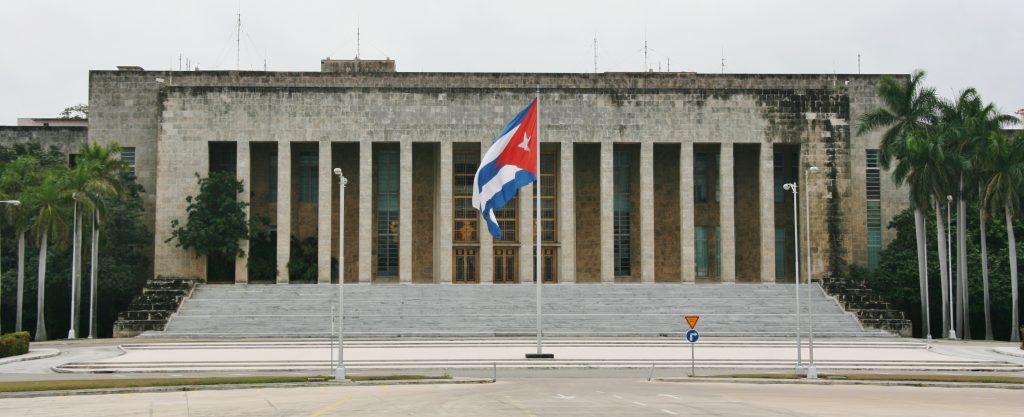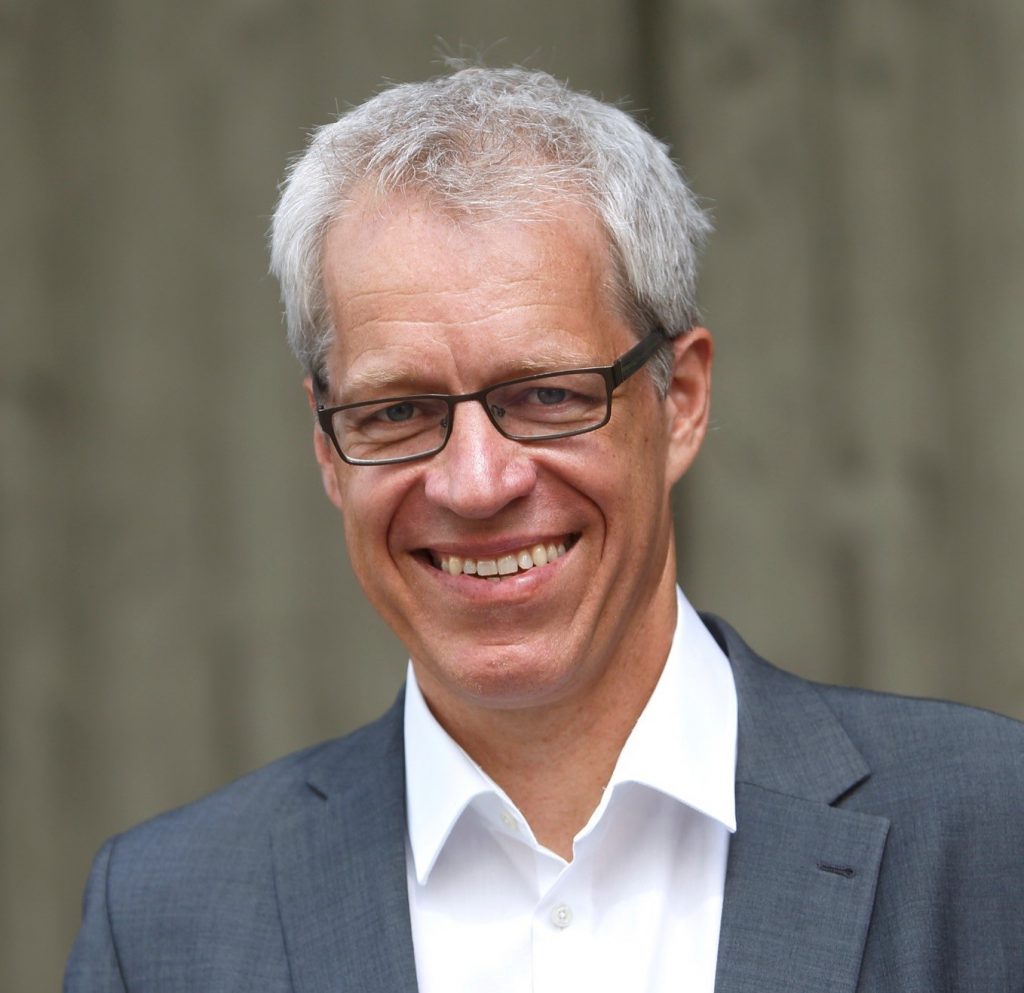Communist Party Congress in Cuba: After the End of the Castro Era, What?
60 years ago, Fidel Castro proclaimed the “socialist character” of the Cuban Revolution. The historic comandante fell seriously ill in 2006 and handed over his offices to his brother and longtime deputy Raúl. Now, when Cuba’s Communist Party convenes in Havana April 16-19 for its 8th Party Congress, Raúl Castro, at the age of 89, will also step down from center stage there. The long, long Castro era is coming to an end. What lies ahead and what remains, however, is more uncertain than ever.
Yet, the immediate succession is settled. For Fidel, remaining unpredictable for enemies and friends alike was always a power resource. Raúl, in contrast, portrayed himself not as “Comandante”, but as the revolution’s top administrative cadre. Under him, the transformation from charismatic to bureaucratic socialism was completed. Just as he had his name engraved on the tombstone next to that of his wife already, he also has planned his succession for a long time. Three years ago, he made Miguel Díaz-Canel, a party functionary born after the triumph of the revolution, chairman of the Council of State and the Council of Ministers, and thus also the country’s formal head of state. Few doubt that Díaz-Canel will now also be promoted to First Chairman of the Communist Party. The replacement of the “historic generation” is being staged in the name of maximum political continuity.
Crisis-induced Change
But at the same time, Cuban socialism is experiencing an unprecedented crisis in which pandemic and recession, supply shortages and social inequality, loss of confidence and political frustration, external constraints and internal contradictions are combining and reenforcing each other. The government, too, knows that “business as usual” is no longer an option; with the currency and exchange rate reform, Díaz-Canel, on January 1 of this year, implemented a key economic reform measure that had been postponed for years. But this step entails a multitude of consequences – from the threat of an inflationary spiral to the re-dollarization of the economy, from layoffs in state-owned enterprises to the need to dynamize agriculture and the private sector. These issues can hardly be solved with the existing approach of turtle-speed gradualism.
According to the constitution, the Communist Party is the leading force in state and society. There is no higher office than that of CP leadership. But even if Díaz-Canel is at the head of both the state and the party in the future, he will not possess the scope of power that Fidel and subsequently Raúl once had. Behind the scenes, the military’s influence will remain strong. Additionally, the structures of the bureaucracy, the interests of state-owned enterprises, the concerns of local cadres and the dwindling support among the population will not allow for unrestricted executive power either. Even under Raúl Castro, the mode of governance was more of a “muddling-through” than a clear top-down reform strategy. There is little to suggest that this could change.
And yet the situation on the island has worsened dramatically. For a long time, the Corona pandemic was under control better than in almost any other country in the region, but since November, Cuba has also been recording sharply rising infection rates. Most importantly, the pandemic has brought tourism, by far the country’s most important industry, to a standstill virtually overnight. According to government figures, the economy shrank by 11 percent last year, and import capacity fell by 50 percent. And this happened when the economy was already navigating rough waters: support from ally Venezuela had plummeted with the oil country’s crisis; the U.S. government under Trump sharply tightened sanctions against the island; and China was no longer willing to supply goods on credit on a large scale if the Cuban side defaulted on accumulated trade debts.
Currency Reform Effects
The consequences of the pandemic exacerbated the financial squeeze to such an extent that the currency and exchange rate reform now had to be implemented – even though conditions were much worse than a year earlier. It abandoned the 1:1 parity between the Cuban peso and the U.S. dollar, which in no way reflected economic strength, but still applied to state-owned enterprises.
As a result, all imported goods used to be dirt cheap for them – the opposite, as it were, of promoting domestic import substitution. Now, just as for the population, they too are subject to an exchange rate of 1:25, making imported intermediate products many times more expensive. On the one hand, this is being passed on to consumers in the form of price increases, resulting in a sharp rise in the cost of living. On the other hand, many state-owned companies are sliding deep into the red. If permanent subsidies cannot be the solution, then fundamental reforms seem inevitable. Years ago, Cuban authorities had already spoken of about one million surplus workers in the state sector.
However, this directly affects the social and political foundations of Cuban socialism. To absorb the unemployment hidden in the state sector, the private sector would have to grow much more dynamically than it has to date. But the reforms remain half-hearted. It is true that there has recently been an important step in this matter as well: The list of permissible trades for “self-employment” was eliminated and replaced by the opposite principle, that only a list of non-permissible sectors is defined. But still, the law for small and medium-sized enterprises, which has been discussed for years and would finally create a reliable legal framework for the private sector, is not getting off the ground. Instead of expanding the sector, many self-employed people have returned their licenses in the current crisis, as they could no longer pay the fees and taxes.
Credibility Challenges
Meanwhile, the supply situation for the population has become so precarious that many are reminded of the emergency situation in the early 1990s, after the collapse of the Soviet Union. Everything has become scarce – or expensive. The currency reform was once announced as a reunification of the economy, which was divided into two currency worlds: the normal Cuban peso (CUP) and the convertible peso (CUC), which was pegged to the U.S. dollar. The latter has now been abolished, but the dollar has taken its place again: Instead of CUC, Cubans must now purchase in foreign exchange stores with debit cards nominated in U.S. dollars. But for many, these are out of reach. Wages are paid in pesos, and those who do not receive remittances from relatives abroad have little access to dollar stores. Where groceries are sold for pesos, people often stand in line for hours.
The social inequality that is made visible in this dual currency system leads to bitterness among the population. The Communist Party’s central Internet portal, “CubaDebate,” recently asked its readers how they had experienced the first months since the currency reform. The feedback was devastating. More than two-thirds of the respondents said that even the increase in wages was not enough to cover their needs, given the sharp rise in prices. And in the comments, in addition to complaints about the shortages and increased costs of living, outrage surfaced that the dollar stores were de facto dividing Cubans into a two-class society – and that ordinary peso income earners were the losers. To be sure, in capitalist societies in Latin America, social inequalities are much sharper and more deeply inscribed in social structures. But in a socialist state, they directly affect the legitimacy of the political model.
The leadership in Havana will emphasize at the party congress that they have outlasted Trump and that they will continue to vigorously oppose any attempts to bring about a change in the political system. Protest from within, as most recently from artistic circles around the “Movimiento San Isidro,” is invariably seen as externally controlled and in the service of imperialism.
The straw for optimism is the COVID-19 vaccine that Cuba is developing. Indeed, this is a remarkable achievement, which demonstrates the high level of the bio-medical sector. Two vaccines are in Phase 3 trials with tens of thousands of test subjects, and there is much to suggest that Cuba will begin using its own vaccines to inoculate its population by mid-year. Nevertheless, the difficulties of mass producing such a vaccine in Cuba should not be underestimated. The government has pompously announced plans to produce 100 million vaccine doses by the end of the year, thus creating an export hit and opening up vaccination tourism to Cuba as a new source of foreign currency income. It would not be the first plan that is more ambitiously formulated than fulfilled.
Uncertain Outlook
Raúl Castro’s departure occurs in a situation that is immensely tense, both economically and socially. The “historical generation” may take credit for not only having built Cuban socialism alongside the Soviet Union for three decades, but also for maintaining it three decades after the Soviet Union’s collapse. But precisely because the generation of “históricos” failed to find a viable reform course, it is now handing over to its successors a country in dire straits. The necessary changes must now take place under the worst possible conditions. And the historical leaders have always rewarded unconditional loyalty, not self-initiative, in their cadre policy. Thus, reliable functionaries have risen who have learned to maneuver skillfully within the structures of party and state, but not to become bearers of hope for the population at large.
At the end of the Castro era, Cuba’s party congress will invoke continuity. But this cannot hide that an end of the crisis is nowhere in sight, and the uncertainty about the island’s future development is palpable.

